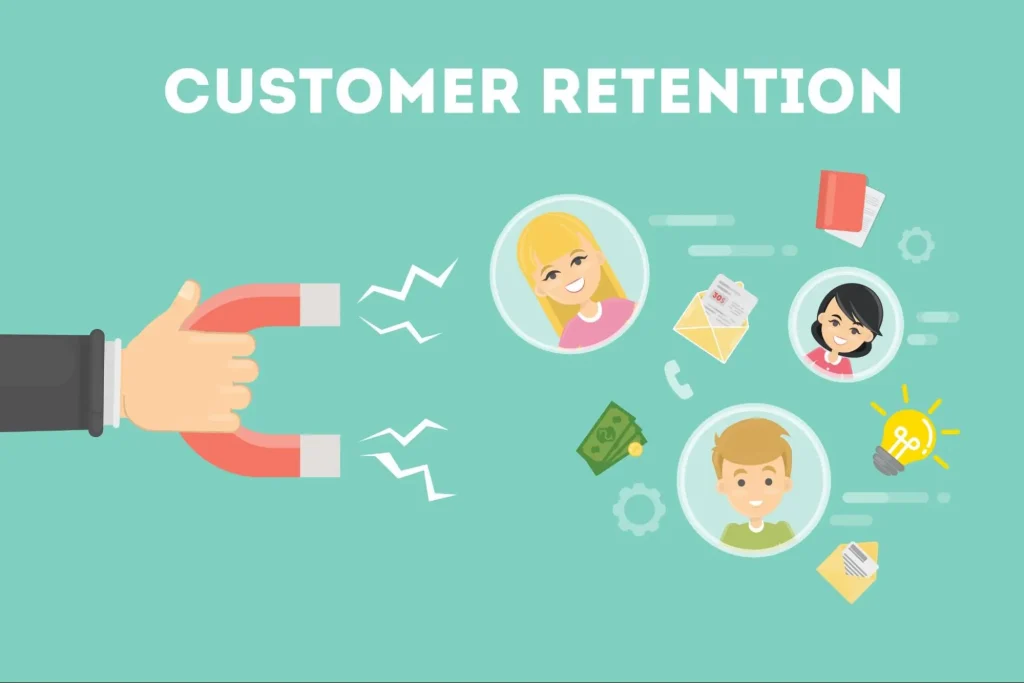
Leveraging customer experience data is crucial in today’s competitive market. Analysing customer feedback helps businesses improve retention and boost sales. Applying these insights drives growth and transforms performance, leading to greater success.
Analyze Customer Feedback by dissecting insight.
To make the most of customer experience data, we need a structured approach. Start by collecting feedback through various channels such as surveys, reviews, and social media. Organise the data into categories like product quality, customer service, and user experience to identify recurring themes and pain points. Prioritise issues based on their impact on customer satisfaction and sales, allowing you to focus on the most critical areas for improvement.
Transform Insights into Actionable Strategies
After analysing the data, it’s important to transform those insights into actionable steps. Start by addressing common pain points through product or service improvements. Enhance customer service processes by responding to specific complaints and developing new features or offerings that align with customer needs. Additionally, streamline the user experience based on usability feedback to ensure a smoother interaction for your customers.
Netflix’s Use of Customer Data to Drive Success
Netflix has built its success on leveraging customer experience data to improve retention and boost sales. The platform collects detailed viewing data, such as what users watch, how long they watch, and what they abandon mid-stream. By analysing this data, Netflix gains deep insights into customer preferences.
Accurate Facts and Figures:
- Personalised Recommendations: Netflix’s recommendation algorithm drives 80% of watched content. This personalisation helps keep users engaged, significantly improving retention.
- Content Investments Based on Feedback: Netflix used viewing data to greenlight its hit original series House of Cards. The analysis showed that viewers liked political dramas and Kevin Spacey, leading to a calculated $100 million investment. The show became one of Netflix’s most-watched series, attracting millions of new subscribers.
- Reduction in Churn Rate: Netflix’s focus on personalisation and customer insights has helped maintain a low churn rate, estimated at around 2.4%, compared to much higher rates for traditional cable TV providers.
Result:
By continuously analysing customer feedback and viewing data, Netflix boosts customer satisfaction and drives substantial growth. The insights transform its operations, leading to over 240 million global subscribers and annual revenue exceeding $30 billion (2023).
Optimise Your Customer Experience Strategy

To refine your customer experience strategy, start by analysing data and setting clear goals for improvement in key areas. Implement changes incrementally to measure their impact and continuously gather feedback to assess the effectiveness of these changes. Based on ongoing customer insights, adjust your strategy to ensure it remains effective. Creating an impactful strategy requires insights from industry experts and proven practices. The key elements mentioned above should guide your approach for optimal results.
1. Focus on Customer-Centricity
Putting customers at the center of your business strategy is key to long-term success. As Seth Godin says, focusing on customer needs helps build trust and loyalty.
2. Leverage Technology and Data
To optimise your customer experience strategy by leveraging data and technology, you need to:
- Use marketing automation tools.
- Implement effective feedback mechanisms.
- Employ customer journey mapping techniques.
- Integrate relevant technologies into your CX processes.
These steps will help you collect and use customer data to make better decisions.
3. Foster a Customer-Centric Culture
Encourage your entire organization to embrace a customer-first mindset. This involves:
- Training employees on the importance of customer experience.
- Aligning internal processes with customer needs.
- Promoting cross-departmental collaboration to enhance CX.
4. Personalize Customer Interactions
Strive to create meaningful, personalised connections with your customers. This can be achieved through:
- Tailoring marketing messages to individual preferences.
- Offering customized product recommendations.
- Providing personalised support experiences.
5. Continuously Improve and Adapt
For an effective and regular evaluation of customer feedback and market trends to uncover opportunities for refinement. Stay ahead by keeping abreast of cutting-edge CX innovations and thought leadership insights from industry experts.
Implementing these principles lays the groundwork for a comprehensive and impactful CX strategy. With this solid foundation, we’ll now explore advanced techniques to elevate customer retention an essential outcome of a well-crafted CX approach.
Boost Customer Retention

Having established a robust customer experience (CX) strategy, the next step is to harness this knowledge to strengthen customer retention.
Keeping your customers engaged and loyal is pivotal for achieving lasting success and driving sustainable business growth.
1. Retention Through Personalisation
Remember, customer experience data is a valuable asset. It can drive meaningful improvements in these strategies. Consistently enhancing customer satisfaction boosts retention and drives sales. Treat customer experience data as a strategic asset for impactful improvements.
Leverage customer data to create personalised experiences:
- Segment your customers based on their preferences and behaviors
- Tailor your communication and offerings to each segment
- Install loyalty programs that resonate with your customers’ values
- Proactively address potential issues before they lead to customer churn
2. Leverage Multi-Channel Engagement
To maximize customer retention, you need to adopt a multi-channel approach:
- Email Marketing: Use email as your primary tool for customer engagement. Send personalised content, updates, and offers to keep your customers informed and interested.
- Social Media: Utilise platforms like Twitter to share your content repeatedly, increasing visibility and engagement.
- Online Communities: Share your valuable insights in relevant forums and Slack channels where your customers gather.
- Empower Employees: Encourage your customer-facing staff to direct customers to useful blog resources, reinforcing the value you provide.
3. Promote Quality Content Strategically
Your blog is a powerful asset for building trust and nurturing a loyal community. By delivering consistent, high-quality content, you can meet customer needs and offer valuable insights.
Here’s how to strategically use your blog to drive customer retention:
- Publish content regularly, aiming for at least once a week.
- Prominently feature your blog on your main website to reinforce customer loyalty.
- Enable subscriptions via email or RSS to maintain ongoing engagement.
- Use storytelling and emotional triggers to create a deeper connection with your audience.
4. Optimise for User Experience
To keep customers coming back, ensure your content is easy to consume and navigate:
- Use clear headings and subheadings to improve readability.
- Integrate multimedia elements like images, videos, and infographics to enhance engagement.
- Implement bullet points and lists for easier scanning and better retention of information.
- Maintain a conversational style to foster a connection with your audience.
By integrating these strategies, you’ll cultivate a more compelling customer experience that encourages ongoing loyalty and repeat visits.
Enhanced retention will position you to effectively harness customer feedback, driving sales growth—an area we will explore further in the next section.
Improve Sales with Customer Feedback

Now that we’ve addressed customer retention strategies, let’s examine how to leverage customer feedback to accelerate sales.
By strategically applying the insights derived from your customers, you can craft a powerful approach to drive significant improvements in your bottom line.
1. Harnessing Feedback for Sales Growth
Your customer feedback is a goldmine of information that can directly impact your sales. Here’s how you can use it effectively:
- Highlight genuine reviews on your website to build trust and credibility, positively influencing potential buyers’ purchasing decisions.
- Simplify the review process by enabling guest submissions and using concise, intuitive forms to encourage greater customer participation.
- Monitor reviews regularly and set alerts for mentions. Responding quickly to feedback shows your commitment to customer satisfaction and strengthens your reputation.
- Feature positive reviews in email campaigns and on social media to highlight satisfaction, drive conversions, and enhance brand credibility.
2. Implementing a Customer Feedback Strategy
To truly leverage customer feedback for sales improvement, you need a systematic approach:
- Collect diverse feedback through surveys, interviews, and social media to gain comprehensive insights and better understand customer needs.
- Use both qualitative and quantitative methods to identify patterns in customer feedback. Consider using AI technologies to streamline this process.
- Prioritise actionable insights by focusing on feedback that aligns with your business objectives and addresses recurring customer needs.
- Close the feedback loop by informing customers of changes and updates, demonstrating the tangible impact of their input.
By applying these strategies, you’re not only enhancing your product or service but also fostering deeper engagement with your customers, driving loyalty and, ultimately, boosting sales.
With this approach to utilizing customer feedback for sales growth established, you’re now positioned to delve into analysing customer experience data for actionable business improvements.
Analysing Customer Experience Data

Having explored the significance of customer feedback, let’s now focus on how to translate this invaluable data into actionable improvements.
By meticulously analysing customer experience data, you can uncover powerful insights that not only enhance customer retention but also maximize lifetime value.
1. Customer Retention
Analysing customer experience data is crucial for improving retention rates. Here’s how you can leverage this information:
- Identify pain points: Look for recurring issues in customer feedback to address common problems.
- Segment your audience: Group customers based on their experiences to tailor retention strategies.
- Track satisfaction trends: Monitor changes in customer satisfaction over time to spot areas needing improvement.
- Predict churn: Use data patterns to identify customers at risk of leaving and take proactive measures.
By implementing these strategies, you’ll be better equipped to keep your customers engaged and loyal to your brand.
2. Lifetime Value
Understanding customer experience data can significantly impact lifetime value. Here’s how to maximize this metric:
- Personalize offerings: Use insights to create tailored products or services that resonate with your customers.
- Optimise customer journeys: Identify and eliminate friction points to enhance the overall experience.
- Develop loyalty programs: design rewards based on customer preferences and behaviors.
- Upsell and cross-sell effectively: leverage data to recommend relevant products at the right time.
Focusing on these areas will help retain customers and increase their lifetime value. Success lies in consistently analysing and acting on customer experience data.
Turning Customer Feedback into Actionable Strategies: A Common Challenge for Businesses

Now that we’ve explored how to analyze customer experience data for impactful improvements, let’s address a common challenge: transforming feedback into actionable strategies.
1. Prioritise feedback based on impact
To make the most of your customer experience data, you need to:
- Identify recurring themes in customer feedback.
- Assess the potential impact of addressing each issue.
- Focus on high-impact, low-effort improvements first.
2. Create a structured implementation process
Develop a systematic approach to turn insights into action:
- Assign ownership to specific team members or departments.
- Set clear timelines for implementing changes.
- Establish measurable goals tied to your customer experience strategy.
3. Leverage templates for efficient content creation
Just like you use templates to streamline your blog content, create templates for customer feedback implementation:
- Develop standardized response protocols for common issues.
- Design action plan templates for different types of customer concerns.
- Use these templates to quickly turn feedback into actionable steps.
4. Continuously monitor and adjust
Remember, improving customer experience is an ongoing process.
- Regularly review the impact of implemented changes.
- Use tools like Animalz Revive to identify underperforming areas.
- Be prepared to pivot your strategy based on real-world results.
After these steps, you’ll be well-positioned to transform customer feedback into actionable improvements.
This strategy not only strengthens customer retention but also drives increased sales by enhancing the overall customer experience.
Conclusion
By leveraging customer experience data, you can not only enhance retention and sales but also effectively address your readers’ pain points.
Focus on building a comprehensive customer experience strategy that incorporates insightful feedback and drives impactful, tangible improvements.
As you begin creating impactful content, leverage the power of storytelling, visual elements, and interactive features to captivate your audience.
By implementing the strategies outlined in this guide, you’ll be well-equipped to transform customer feedback into actionable strategies.
Stay committed to understanding your audience, refining your content, and continuously adapting to their needs.
These efforts will not only enhance engagement but also foster a loyal community around your brand, ultimately driving growth and success in your blogging endeavors.
